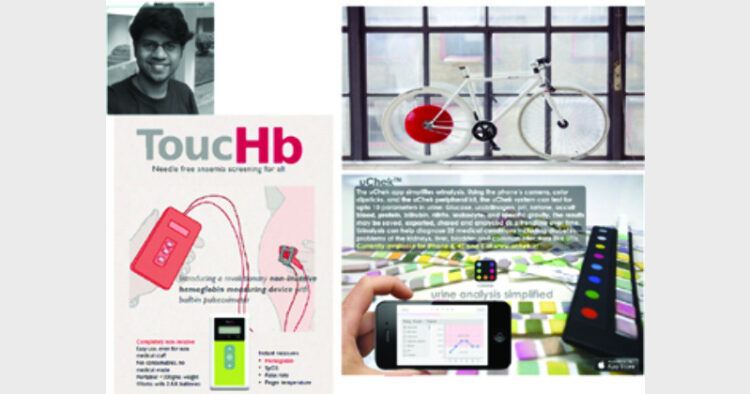Dr Abhay Jere
One day, a young reporter boldly asked Thomas Edison about his 9,000+ failed attempts while inventing a light bulb and whether he thought he should just give up. Perplexed, Edison replied, “Young man, why would I feel like a failure? And why would I ever give up? I now know definitively over 9,000 ways that an electric light bulb will not work. Success is almost in my grasp.” And shortly after that, with over 10,000 attempts, Edison invented the light bulb.
With a similar mindset, Biosense Technology’s Myshkin Ingawale from Thane and his friends started working aggressively on a dream medical device. Their focus was on detecting the medical condition ‘anemia’ as more than 2 billion people worldwide suffer from it.
Myshkin says, “Children and pregnant women are the most at risk of mortality—more than 1 million women and children die annually from undiagnosed anemia though it is perfectly treatable and can be controlled by changes in diet, iron tablets and folic acid.”
Till date, quantitation of blood haemoglobin level which is an indicator of anemic condition, is done only by using invasive techniques as no non-invasive method is currently available. It also requires a trained technician and a laboratory set-up. But Myshkin and his team conceptualised a completely non-invasive methodology based on ‘optical principals’ to measure haemoglobin. They made more than 32 failed attempts before they could achieve a breakthrough in building world’s first non-invasive, low cost, scalable, systemic health care solution ‘ToucHb’ for diagnosing anemia. ToucHb could be a boon for millions of poor as well as old people around the globe, who suffer from undiagnosed and therefore untreated anemia. It is simple, inexpensive and non-invasive detector for anemia, which requires no needles, no pricking, no high tech gadgets and no trained assistants. ToucHb is a real game changer. Apart from blood hemoglobin, Touchb can measure oxygen saturation, body temperature and pulse rate.
“The ToucHb works by shining light of different wavelengths through the tissue of the subject’s finger. Hemoglobin has a characteristic absorbance. Understanding the spectrum, and understanding what signals to filter out, ToucHb is able to determine the concentration of hemoglobin present in tissue,” says Myshkin. Now, ToucHb is deployed in few clinics in India for testing and currently the team is planning to scale the production from 30-40 a batch to more than 1,000 a batch.
After the ToucHb’s success, now he and his team are working on a smart phone app ‘uCheck’ that helps diagnose and monitor 25 medical conditions. It uses smart phone camera, colour dipstick and the uCheck’s peripheral kit, to measure up to 10 parameters of urine such as glucose, ketone, urobilinogen, pH, bilirubin, etc. The results can be saved, shared, exported and analysed as a trend over time. Routine urine analysis can help diagnose more than 25 medical conditions including diabetes, problems of kidney, liver and bladder along with common infections like UTIs.
On a personal front, Myshkin is a big fan of bicycles and working on a project idea for a fabrication system that will enable anyone to design a bicycle for themselves from frame to finish.
(The write can be contacted as abhay_jere@persistent.co.in)














Comments